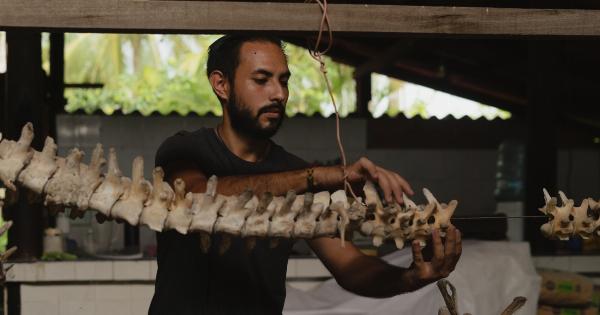Troocitis, also known as troocytosis, is a medical condition that affects the musculoskeletal system. It is characterized by inflammation and swelling in the troocite, which is a small, fluid-filled sac that cushions and lubricates the joints.
Troocitis commonly occurs in the shoulder, elbow, hip, and knee joints, causing pain and limiting mobility.
Symptoms of Troocitis
The symptoms of troocitis may vary depending on the affected joint. However, some common signs and symptoms include:.
- Pain or tenderness in the joint
- Swelling and redness
- Stiffness and limited range of motion
- Cracking or popping sounds during joint movement
- Weakness in the affected area
- Difficulty performing everyday tasks
Causes of Troocitis
Troocitis can have several underlying causes, including:.
- Overuse or repetitive movements: Activities that involve repetitive motions or excessive stress on a joint, such as sports, can lead to troocitis.
- Injury: A sudden injury or trauma to a joint can cause inflammation and troocitis.
- Age-related wear and tear: As people age, the cartilage in their joints may deteriorate, increasing the risk of troocitis.
- Infection: In rare cases, troocitis can be caused by an infection in the joint.
Diagnosis of Troocitis
If you are experiencing symptoms of troocitis, it is important to see a healthcare professional for an accurate diagnosis. The doctor will perform a physical examination and may order additional tests, such as:.
- X-rays: X-ray images can help identify any structural abnormalities or injuries in the joint.
- Magnetic resonance imaging (MRI): An MRI provides detailed images of the soft tissues, such as tendons and ligaments, allowing for a more comprehensive evaluation of the joint.
- Ultrasound: This imaging technique uses sound waves to create real-time images of the joint and surrounding structures.
- Joint aspiration: In some cases, the doctor may use a needle to extract fluid from the joint for laboratory analysis to rule out other possible conditions.
Treatment Options for Troocitis
The treatment for troocitis aims to reduce pain, inflammation, and improve joint function. The choice of treatment depends on the severity of symptoms and the underlying cause. Here are some common treatment options:.
1. Rest and Activity Modification
Resting the affected joint is essential to allow the inflammation to subside. This may involve temporarily avoiding activities that worsen the symptoms.
Physical therapy exercises may also be recommended to strengthen the muscles around the joint and improve flexibility.
2. Nonsteroidal Anti-Inflammatory Drugs (NSAIDs)
NSAIDs, such as ibuprofen and naproxen, can help reduce pain and inflammation. These medications are available over-the-counter or by prescription, depending on the strength and dosage required.
It is important to follow the recommended dosage and consult a healthcare professional before starting any medication.
3. Steroid Injections
In some cases, a healthcare professional may recommend injecting corticosteroids into the affected joint to reduce inflammation and provide pain relief. This treatment option is typically used for severe or persistent troocitis symptoms.
4. Physical Therapy
A physical therapist can design a customized exercise program to strengthen the muscles around the affected joint and improve its range of motion. They may also use techniques like massage and manual therapy to alleviate pain and stiffness.
5. Cold and Heat Therapy
Applying cold packs or ice to the affected area can help reduce inflammation and alleviate pain. Heat therapy, such as using warm compresses, can help relax muscles, improve blood circulation, and reduce stiffness.
6. Assistive Devices
Using assistive devices, such as crutches, canes, or braces, can help alleviate pressure on the affected joint and provide support during movement.
7. Surgery
In severe cases of troocitis where conservative treatments have not been successful, surgery may be considered. The type of surgery will depend on the underlying cause and may involve removing damaged tissues, repairing tendons, or joint replacement.
Prevention of Troocitis
While troocitis may not always be preventable, there are steps you can take to reduce the risk:.
- Practice proper joint mechanics during physical activities or sports to avoid excessive stress on the joints.
- Warm up before exercising or participating in sports to prepare your muscles and joints for the activity.
- Follow a balanced exercise routine that includes strength training to build muscle around the joints and flexibility exercises to maintain joint mobility.
- Take breaks and rest between repetitive tasks or activities that strain the joints.
- Maintain a healthy weight to reduce the stress on your joints.
- Use appropriate protective gear during sports or high-risk activities.
Conclusion
Troocitis can significantly impact the quality of life by causing pain, discomfort, and limited mobility. Early diagnosis and appropriate treatment are crucial for managing the symptoms and preventing further joint damage.
If you experience persistent joint pain or suspect troocitis, consult a healthcare professional for an accurate diagnosis and personalized treatment plan.































